Skin Deep: Feeding the Global Lust for Leather
As 2016 marched to a close, rumors and panic raced through the leather tanneries in the Hazaribagh neighborhood of Dhaka. After years of extensions and delays, the government would finally require the remaining 150 or so tanneries in this historically unregulated and polluted corner of Bangladesh’s capital city to shutter. Any tanners who wanted to remain in business would have to relocate to a planned industrial park in Savar, a community roughly 14 miles away.
Authorities vowed to cut off utilities, blockade roads to prevent shipments of raw hides from entering Hazaribagh, go door-to-door to roust disobedient tanners, and revoke the licenses of all who defied their orders.
 This story was supported by the Pulitzer Center.
This story was supported by the Pulitzer Center.
Days before the deadline, Mohammad Shohorab Hossain Jhony, a director of FFM Leather Complex, scrolled through his smartphone to show a friend photographs of his new facility under construction at the Tannery Estate Dhaka at Savar — a concrete slab, two walls, no roof, just 40 percent completed. Weighing the loss of his license against six months of lost production while the Savar building was finished, Jhony said he would be forced to close, at least temporarily, putting 70 to 100 men out of work. If they chose not to follow him to the industrial park, a six-hour round-trip commute in bumper-to-bumper Dhaka traffic, some might never return to FFM.
On December 30 the blockades went up, and then on January 1 the government stood down, extending the deadline again by telling the tanners they would have to stop processing wet animal hides on January 31, without exception. They would have until March 31 to move their entire operations. “This is the final decision,” Mosharraf Hossain Bhuiyan, the Bangladesh industries secretary, told the local press.
So it has gone for years, as the Bangladesh government attempts, in fits and starts, to make good on promises to clean up its leather processing industry and propel what is, in effect, a 19th-century operation into the 21st century.
About 90 percent of Bangladesh’s leather is tanned in Hazaribagh. And the country’s economy depends heavily upon leather and the manufacture of leather goods — which explains in no small measure the government’s reluctance to crack down on polluters. In 2015 and 2016 Bangladesh produced about $1.5 billion in leather and leather goods, most of it exported, according to the Bangladesh Board of Investment. Leather and leather goods represent the country’s second largest export, after garments. Turmoil in Hazaribagh threatens to upend the country’s efforts to increase its tiny share of the more than $200 billion global leather market.
Should that come to pass, it would be just one more step in a long journey for the tanning industry, which has spent decades hopscotching across the globe, assiduously fleeing regulation and rising labor costs, and leaving long-lasting toxic footprints at each stop.
So far, fewer than 40 of Hazaribagh’s tanneries have moved to Savar, and an abrupt shutdown of the remaining tanneries could put thousands of people instantly out of work. That would almost certainly provoke civil unrest and deal a major blow to the country’s leather industry — just when the government is trying to grow exports and fend off competition from China and Vietnam. On the flip side, as The Dhaka Tribune reported in September, negative publicity about conditions in Hazaribagh is scaring away international buyers and driving down finished leather exports, which fell by 30 percent last year, according to government figures.
In fact, the international shaming of Bangladesh’s leather industry could succeed where government decrees have failed. It has been seven years since the Bangladesh High Court ordered the government to move or close Hazaribagh’s tanneries. Almost 14 years have passed since the Bangladeshi government announced plans to develop an industrial park with a shared effluent treatment plant for tanneries. Yet Hazaribagh remains arguably one of the most intensely polluted places on the planet.
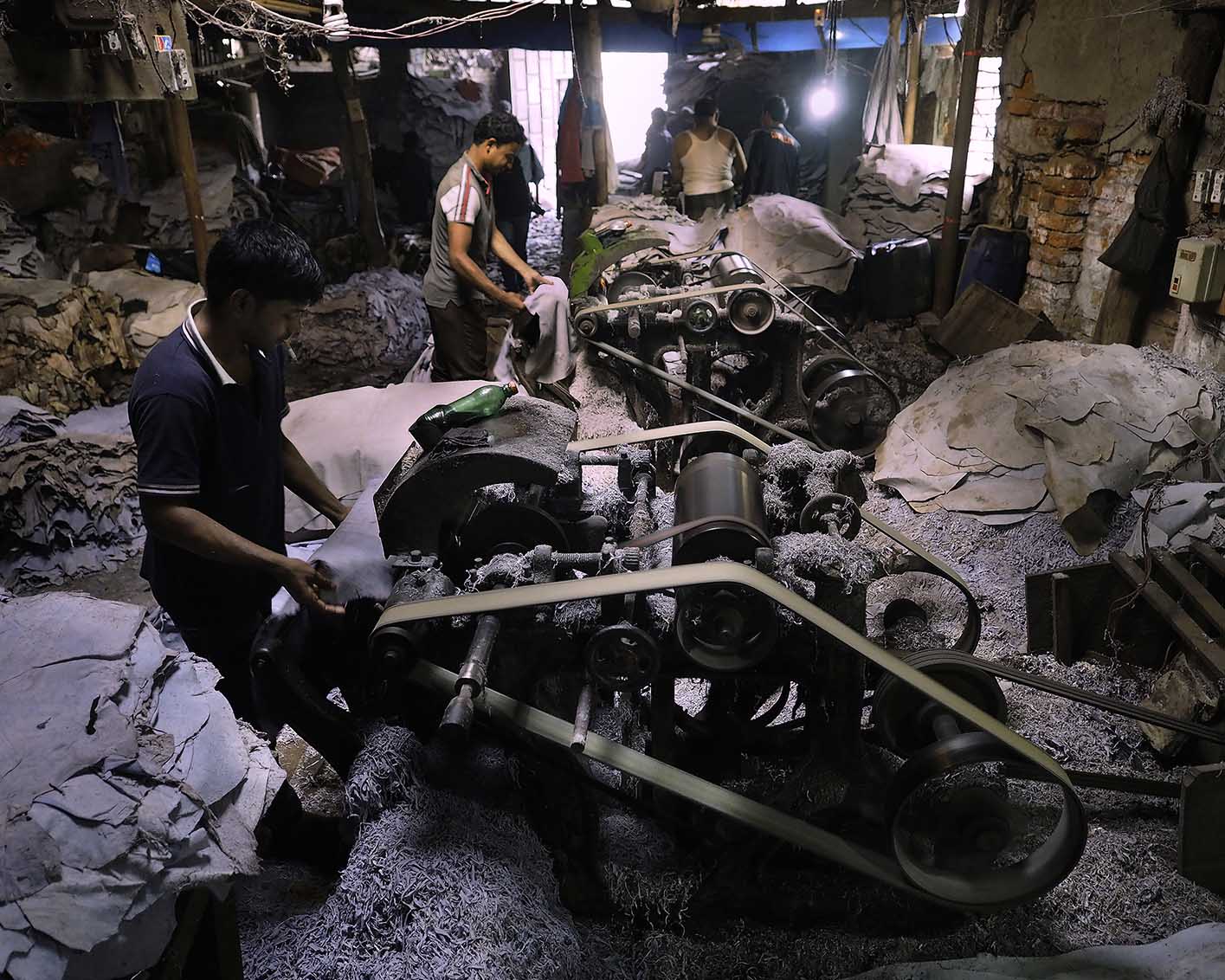
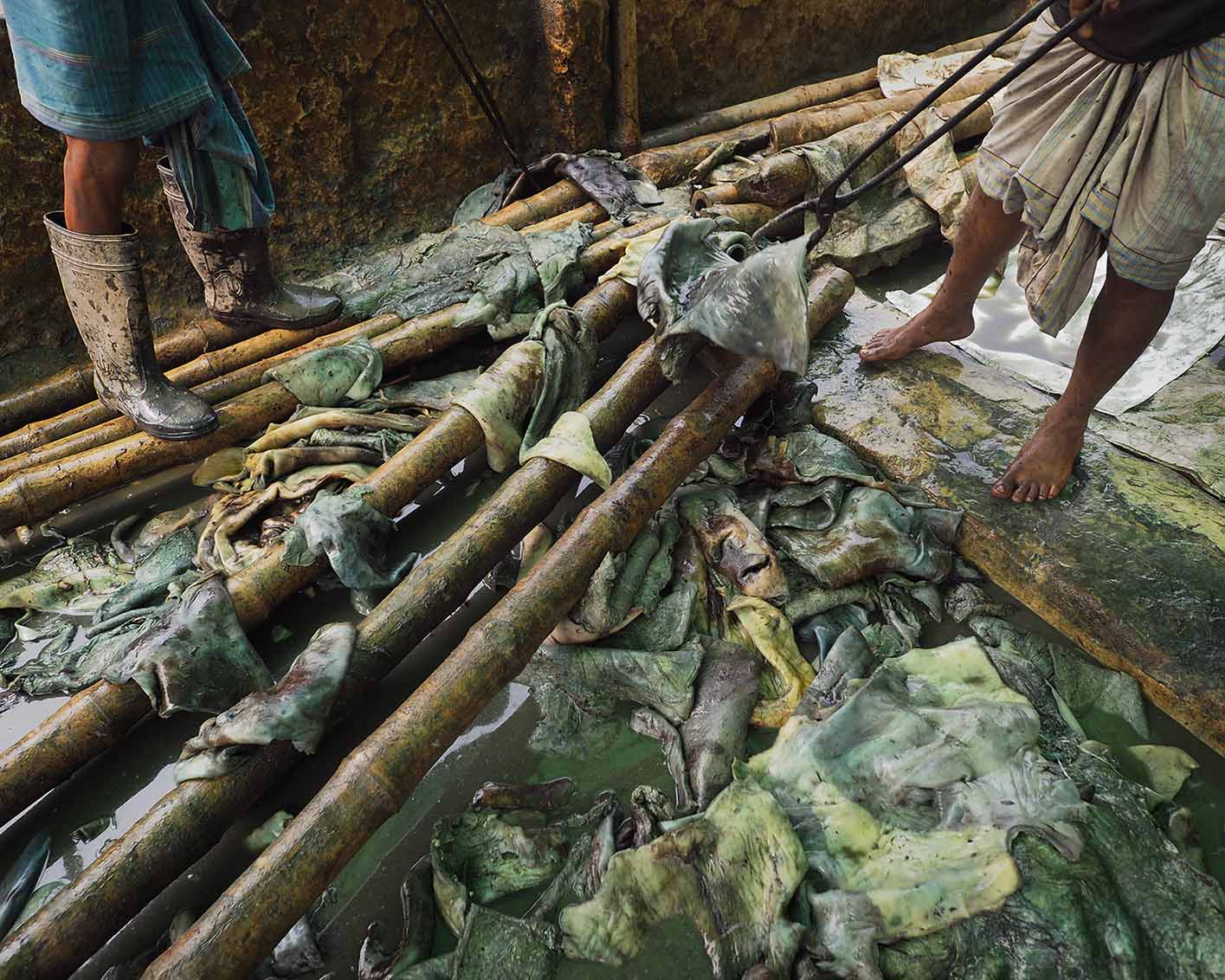
By official estimates, the tanneries of Hazaribagh pump almost 5.8 million gallons of untreated effluent a day into open canals that pour into the Buriganga River and generate more than 100 tons of solid waste in the form of raw hide scraps, flesh, and fat. The tannery effluent, laced with chromium (III) sulfate, sulfuric acid, salts, lime, surfactants, degreasers, ammonium sulfate, and many other chemicals, contaminates the water and river bed and kills aquatic life. Numerous studies have found highly elevated levels of chromium and other chemicals in the soil and water of Hazaribagh. For years, government officials, citing the planned move to Savar, have openly admitted that they do not enforce environmental regulations in the district.
The Buriganga itself, once the main source of drinking water for Dhaka, has become so polluted by tannery and other industrial and human wastes that it is widely regarded as unsafe for human use — even as the greater metropolitan area of more than 17 million people struggles with episodic droughts and depleted groundwater supplies. Leather scraps accumulate in rotting heaps six feet high along the canals.
Chickens — a staple of the Bangladeshi diet — are often fed tannery scraps, and Dhaka University chemistry professor Mohammad Abul Hossain, Ph.D., and his colleagues have found high levels of chromium in the bones, brain, and muscle of the birds. Residents who ate 250 grams of chicken a day, about a quarter of a bird, would consume up to four times the recommended amount of dietary chromium, according to Hossain’s research. Chicken-feed producers officially ceased using tannery scraps after his report came out, but unregistered factories abound and locals still boil the waste and feed it to their household poultry, he says.
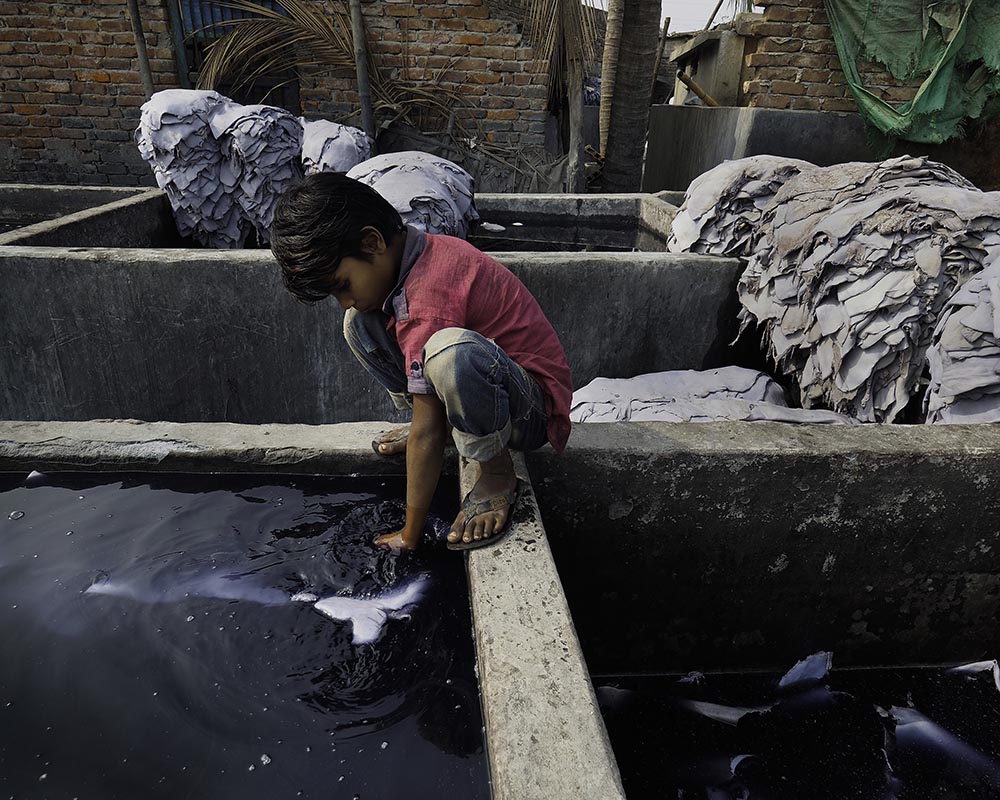
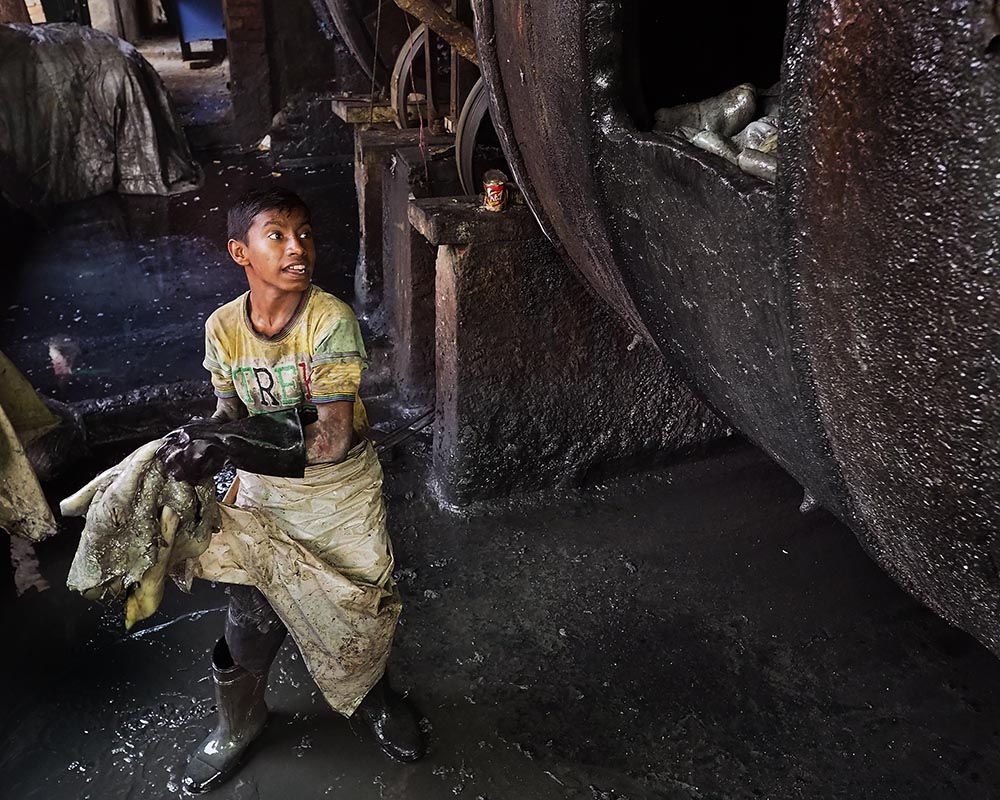
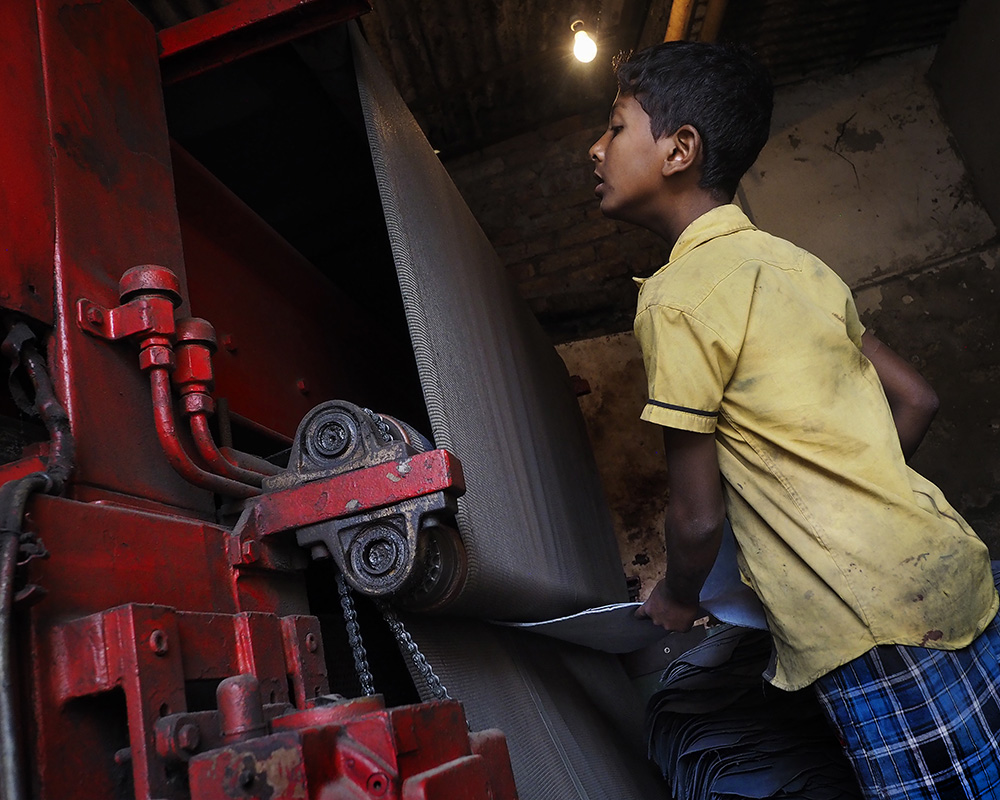
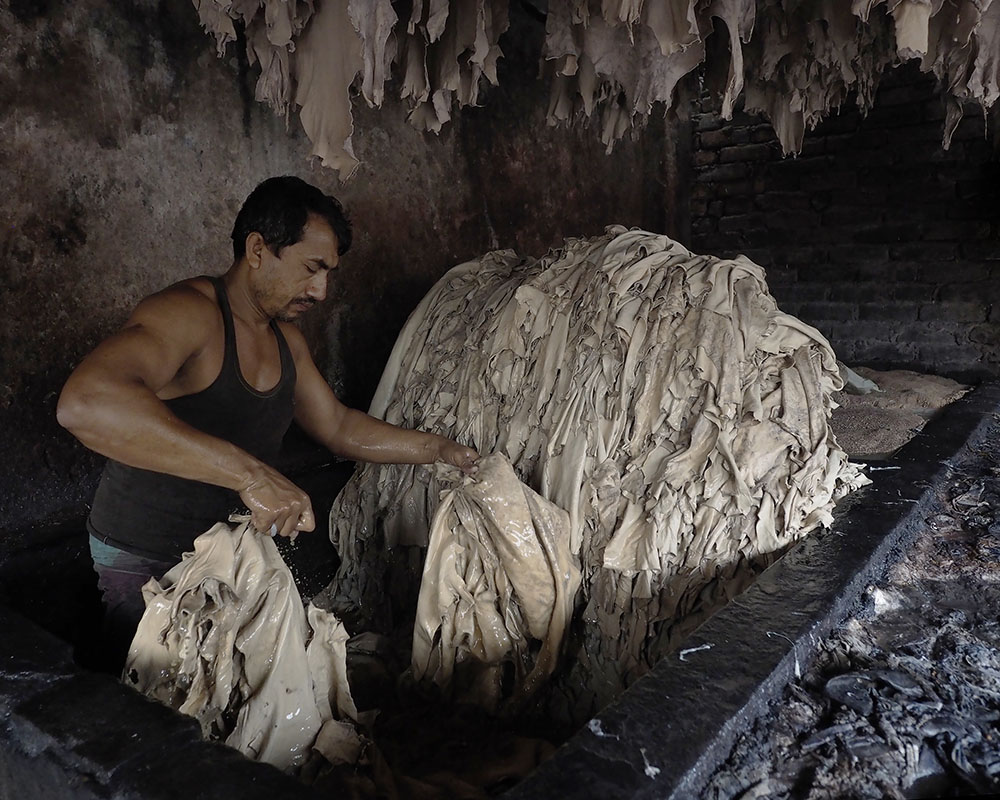
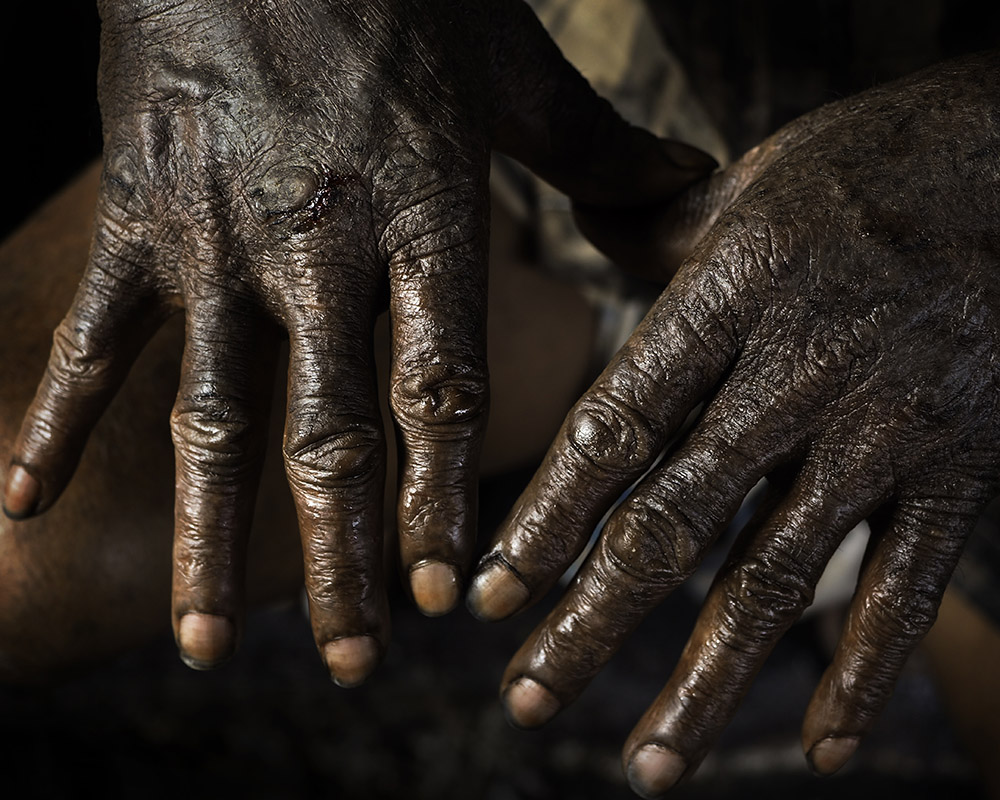
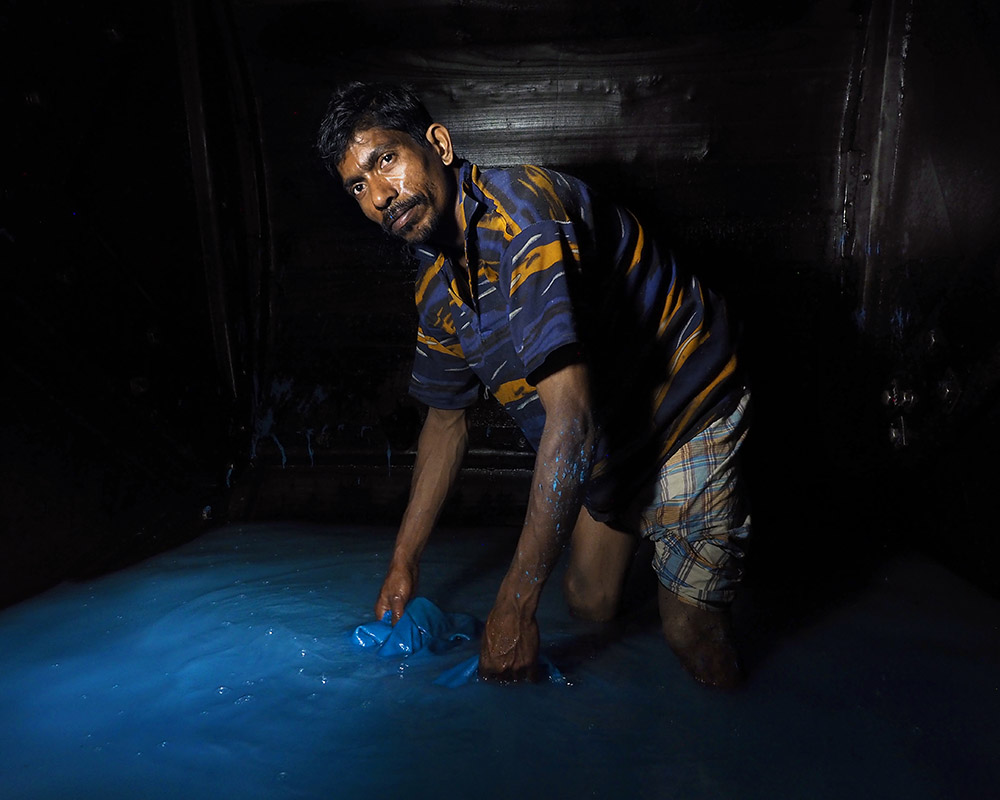
While chromium (III), also known as trivalent chromium, is far less dangerous than the carcinogenic compound chromium (VI), or hexavalent chromium, long-term and direct exposure to chromium (III) is known to cause serious skin and respiratory irritation. Hossain and others have also found that when leather scraps are exposed to high heat under certain conditions, some of the trivalent chromium converts to hexavalent chromium, posing more serious risks.
Chrome tanning is the leading method used worldwide, and most argue that chromium (III) sulfate can be used safely as long as workers are properly protected and the factory effluent is captured and treated. But many of the more than 30 chemicals used in tanning animal hides also have their own dangers. Some of the workers photographed had blackened and peeling skin on their hands and feet from long exposure to tanning chemicals. Others coughed almost constantly.
In Hazaribagh, worker protections are scarce and child labor is common, as the nonprofit group Human Rights Watch documented in an extensive 2012 report.
“Tanning is an industry that is extremely hazardous, which means two broad things in terms of labor,” says Richard Pearshouse, the author of the Human Rights Watch report and a frequent visitor to Hazaribagh. “You need to take reasonable steps to protect your workers — protective equipment, masks, gloves, aprons, to protect against chemical burns — and you do not employ children.”
A few of the workers photographed for this essay did wear boots and gloves. Most, though, worked with their bare hands, stood barefoot in chemicals on the tannery floor, waded into tanks filled with tanning solutions, and climbed into drums to retrieve the wet blue leather, literally bathing themselves in a soup of caustic and potentially toxic chemicals. Young boys carried water and hides and operated stretching machines, while smaller children tended pieces of leather soaking in open vats.
“If they don’t address the problems of worker safety and working conditions and child labor, they are just moving the problem from Hazaribagh to Savar,” says Pearshouse.
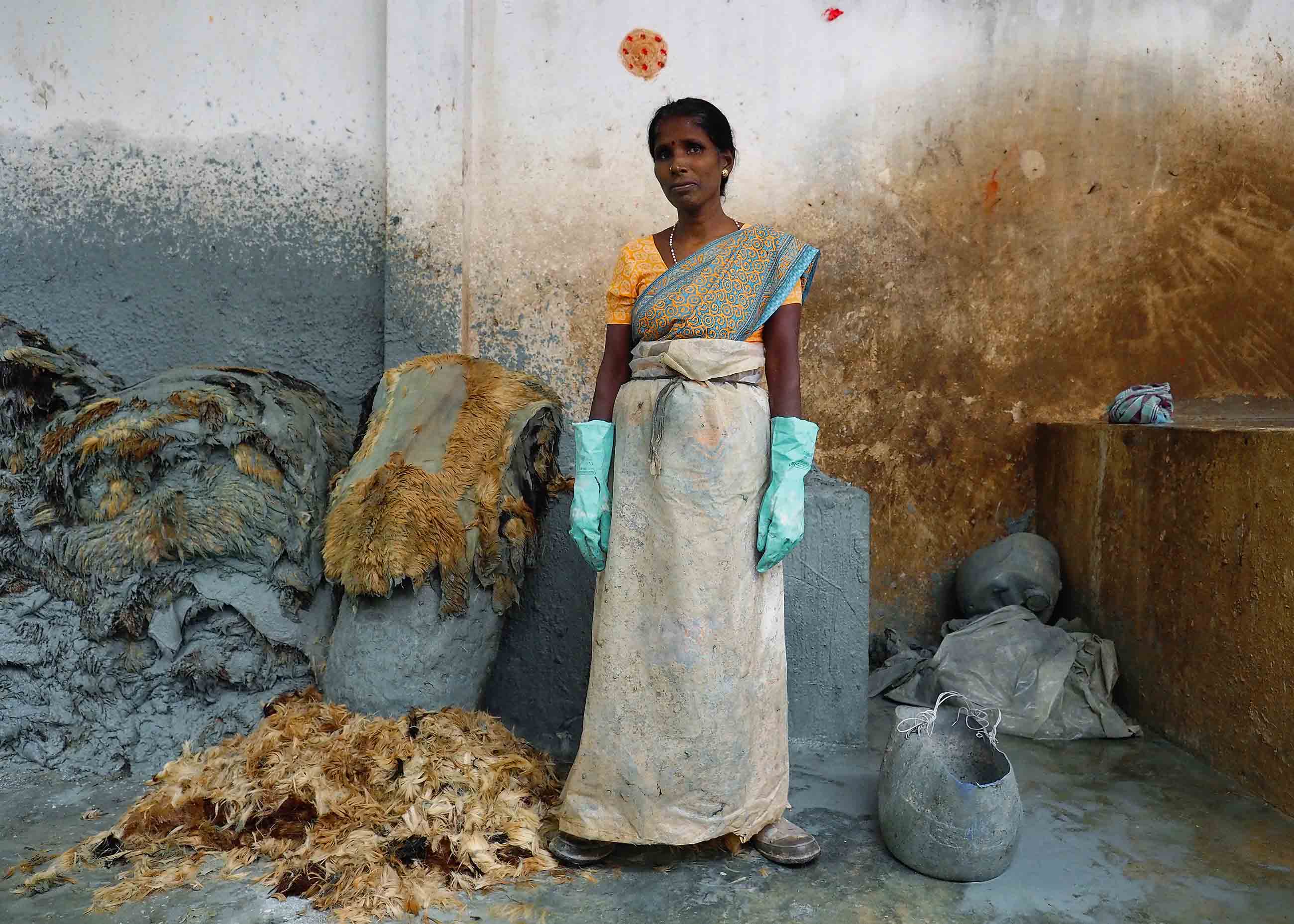
The turmoil today in Hazaribagh is reminiscent of the situation in Kolkata, India in the 1990s and of the collapse of the century-old tannery industry in Gloversville, New York in the 1980s. In Gloversville, competition from cheaper labor coupled with tougher local and federal environmental laws forced one tannery after another out of business. The town and surrounding county have spent the decades since rebuilding the economy and cleaning up pollution the factories left behind.
In Kolkata, the Supreme Court of India ordered all tanners out of the city almost two decades ago. In response, the government built the Kolkata Leather Complex with a common effluent treatment plant. About 300 tanneries located in the complex today produce about 25 percent of India’s leather. Environmental controls are better at the industrial park than at the old Kolkata tanneries. Labor oversight, authorities say, also has improved, although horrific accidents still happen. In December 2015, three workers died from inhaling toxic fumes while cleaning out a holding tank without protective gear.
India, one of the world’s leather giants, exported $5.92 billion in leather and leather goods between 2015 and 2016, with about 14 percent of that going to the United States, according to the India Brand Equity Foundation. Roughly 60 to 70 percent of the country’s leather and leather goods is produced in the southern Indian state of Tamil Nadu, where tanneries still look a lot like those in Hazaribagh.
Here women — wrapped in plastic to protect their brightly colored saris — sit or stand for hours plucking hair from softened goat skins stretched over frames, while the men tend the drums filled with hides and chemicals.
Despite efforts at reform, human rights groups continue to find widespread pollution and horrendous working conditions in the tanneries of Tamil Nadu. A joint study in 2015 by Norwegian and Indian organizations found workers, particularly migrants, unprotected and unaware of the hazards. In January 2015, 10 migrant workers were killed where they slept when a wall of a Ranipet tannery collapsed and released a torrent of slurry upon them. It was one of India’s most horrific tannery accidents.
Tamil Nadu also is beset with serious environmental contamination caused in part by abandoned tanneries and factories that made chemicals for the leather-processing industry. More than 20 years after the Tamil Nadu Chromates & Chemicals Ltd. factory closed, the grounds of the abandoned factory on the SIPCOT Industrial Complex outside Ranipet remain covered in 165,000 tons of chromium-bearing waste. Government agencies and international environmental groups have been studying the site and developing remediation plans since the late 1990s. Meanwhile, the bright-yellow runoff has contaminated land 1.5 miles south of the plant with hexavalent chromium, a 2010 study shows.
Bangladesh authorities, too, will face a monumental environmental cleanup when the tanners finally leave Hazaribagh. Mizanur Rahman, treasurer of the Bangladesh Tanners Association and executive director of Samota Leather Complex, said the association and tanners will contribute to the efforts to restore Hazaribagh out of “social responsibility.”
So far, though, the government has yet to announce official plans to address lingering pollution. Pearshouse says that when he asked a government official last year about remediation plans, the official told him a cleanup would not be necessary because “all the pollution would be washed away.”
“They have no idea who would actually fund [a cleanup],” Pearshouse adds.
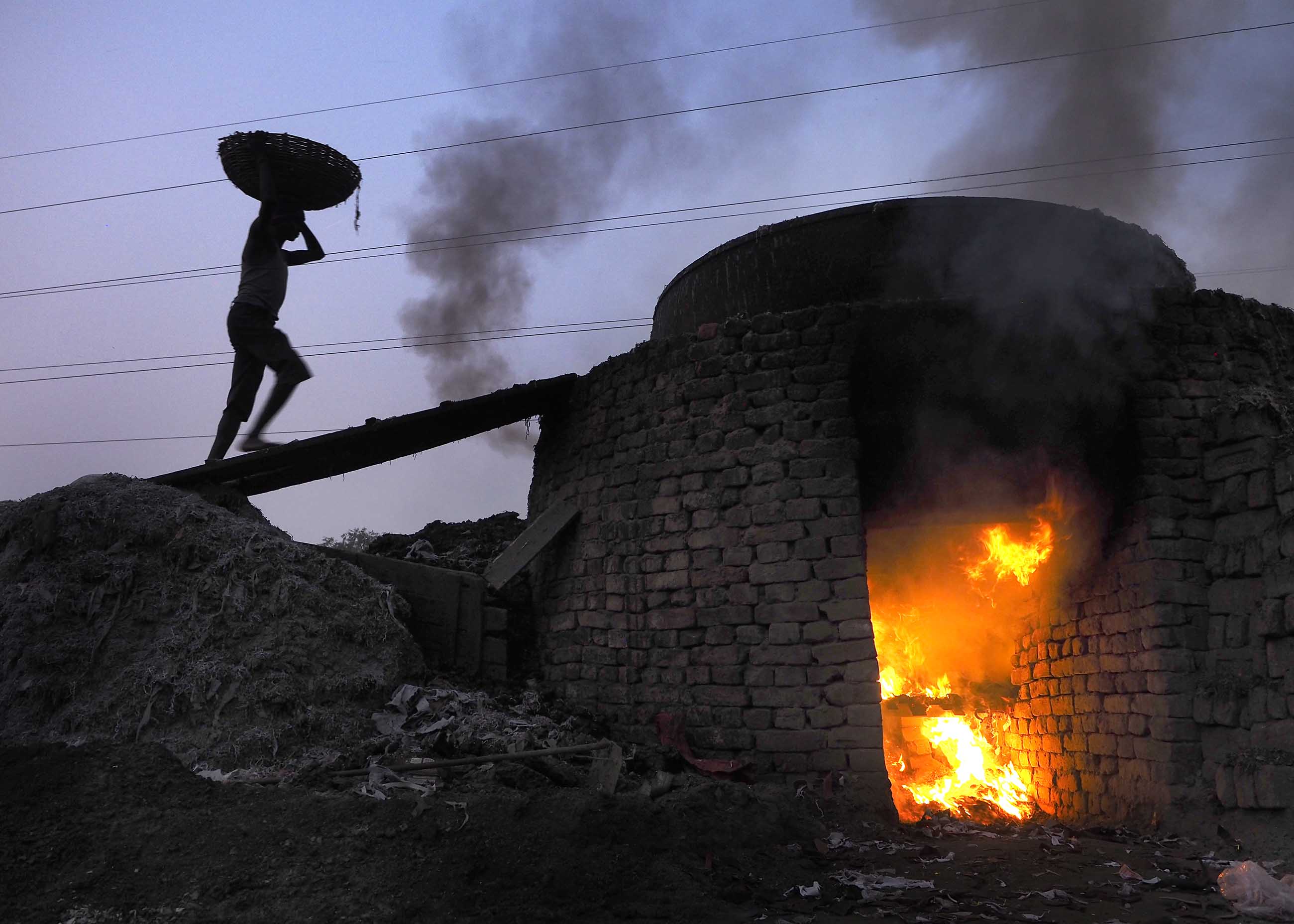
Shipping records compiled by Datamyne, a provider of international trade data, provide a snapshot of Bangladesh exports to the United States. From January through the end of October 2016, Datamyne reported $52.24 million worth of individual shipments of leather and leather goods to companies in the United States. Very little of that was processed leather shipped directly from Hazaribagh tanneries. Most of the shipments contained finished leather goods bound for major U.S. and European fashion retailers. There is virtually no way for consumers to know where the leather in those shoes, purses, or belts came from unless the companies themselves reveal their supply chains.
According to the Datamyne records, more than a dozen fashion and shoe companies imported products made in Bangladesh through November 2016. The largest of these include Michael Kors, Timberland, Hugo Boss, C & J Clark America, Puma, and the Gap Inc. brand Banana Republic.
Timberland, Hugo Boss, Puma, Clarks, and Gap each told Undark that their companies do not use leather from Hazaribagh in their products manufactured in Bangladesh. Timberland provided the most explicit information, including photographs of shipping cartons and invoices, to verify that the leather used in its products made in Bangladesh came from a Vietnamese tannery rated “gold” by the Leather Working Group, an international association that audits tanneries and promotes best practices for the industry. A company spokeswoman said that Timberland employs numerous checks and balances to ensure the integrity of its supply chain and audits its manufacturing partners and suppliers at least annually ensure that the companies treat their workers fairly and meet the company’s standards for environmental quality.
“To ensure the integrity of our products and brand, we have to be vigilant about our leather supply chain. Not to mention, of course, it’s the right thing to do,” said Colleen Vien, the company’s sustainability director. “One way we ensure that we are sourcing the best leathers, in terms of quality as well as sound manufacturing practices, is only using tanneries that are rated gold or silver by the Leather Working Group. No tanneries in Bangladesh today meet our stringent standards.”
Puma said that 90 percent of its leather comes from from tanneries rated by the Leather Working Group. The Bangladesh factory that makes shoes for Puma was last audited in November 2016, the company said. “We are aware of the challenges related to leather production in Bangladesh,” they said. “Therefore Puma does not source any leather from Bangladesh and as far as we are aware, our suppliers are also not sourcing any leather from Bangladesh.”
Clarks, a founding member of the Leather Working Group, said the company conducts “social audits” at tanneries supplying 80 percent of the leather for its products, and that it sources more than 75 percent of its leather from LWG-rated tanneries. About 20 percent of the leather comes from tanneries in regions considered at low risk for social abuses, the company said, and tanneries that have not achieved LWG medal-rated status are closely monitored to ensure that they are making progress toward meeting the higher standards.
“Clarks has never specified leather from tanneries in Hazaribagh,” wrote Anthea Carter, the company’s global head of corporate responsibility, in an email. “Prior to 2013 the Clarks business sourced a small proportion of footwear from Bangladesh through agents. Due to the commercial arrangements with those agents Clarks did not specify or have visibility of the sources of the leather used in that production. From the information available, we have not found any links to sourcing from Hazaribagh tanneries prior to 2013.”
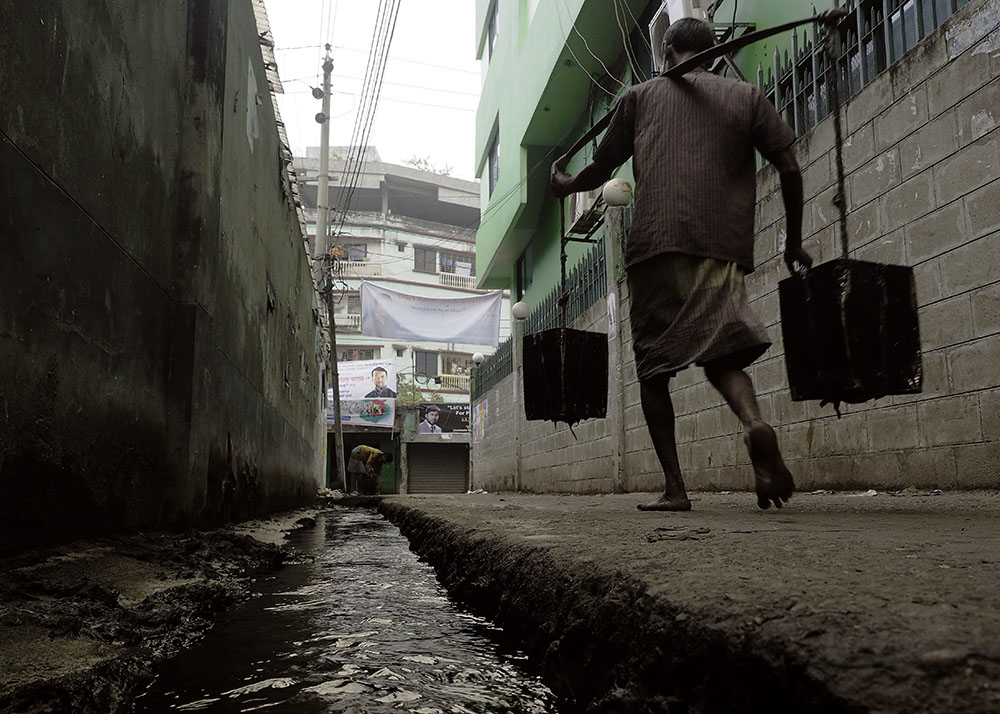
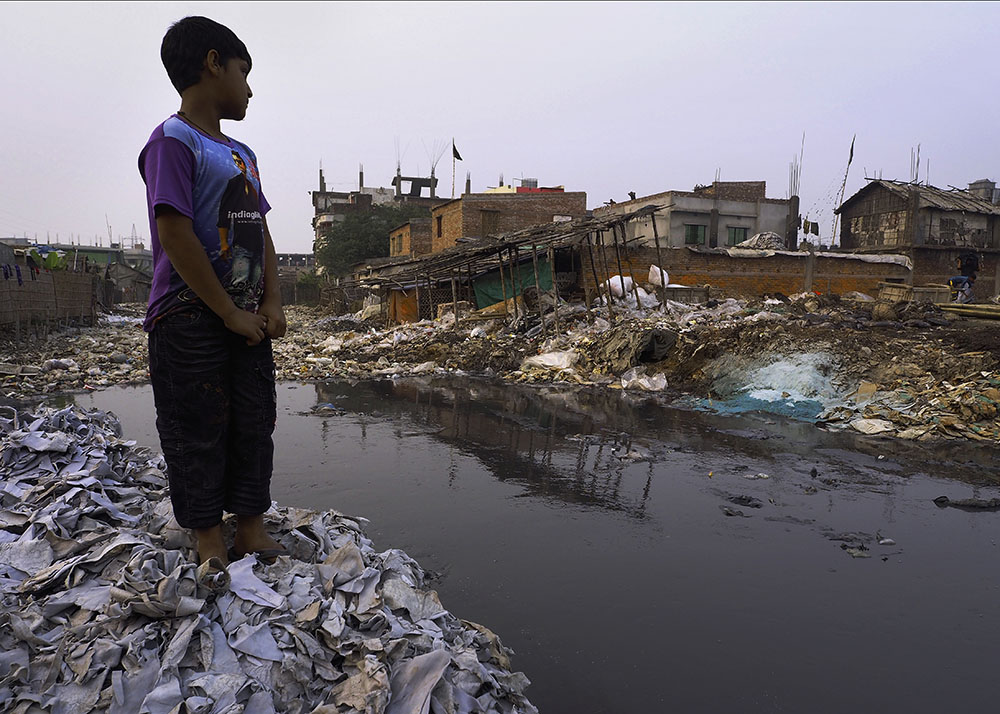
Michael Kors, which, according to Datamyne, received more than 200 shipments from Bangladesh factories in 2016, did not respond to repeated telephone and emailed requests to discuss its leather supply chain.
Dozens of companies now have statements on their websites espousing support for ethical sourcing, human rights, and sustainable manufacturing processes. But few disclose detailed information about their suppliers. As conditions in Hazaribagh and other tanning centers of the world become more well known, consumers are asking whether the leather in their boots or bags was produced by tanneries that pollute and expose workers to hazardous conditions. Pearshouse maintains that companies have an obligation to answer those questions.
“If there are large companies that are importing from Bangladesh, the question of ‘where did your leather come from’ must be known,” says Pearshouse. “It’s no longer adequate for a company to say ‘We don’t know,’ or ‘We don’t say.’”
“Leather companies should be on notice,” he adds, “that if they’re importing from Bangladesh, this is the most notorious tanning area in the world.”
Funding for this project was provided in part by the Pulitzer Center on Crisis Reporting. Larry C. Price contributed reporting for this article, as did Salahuddin Ahmed in Dhaka.










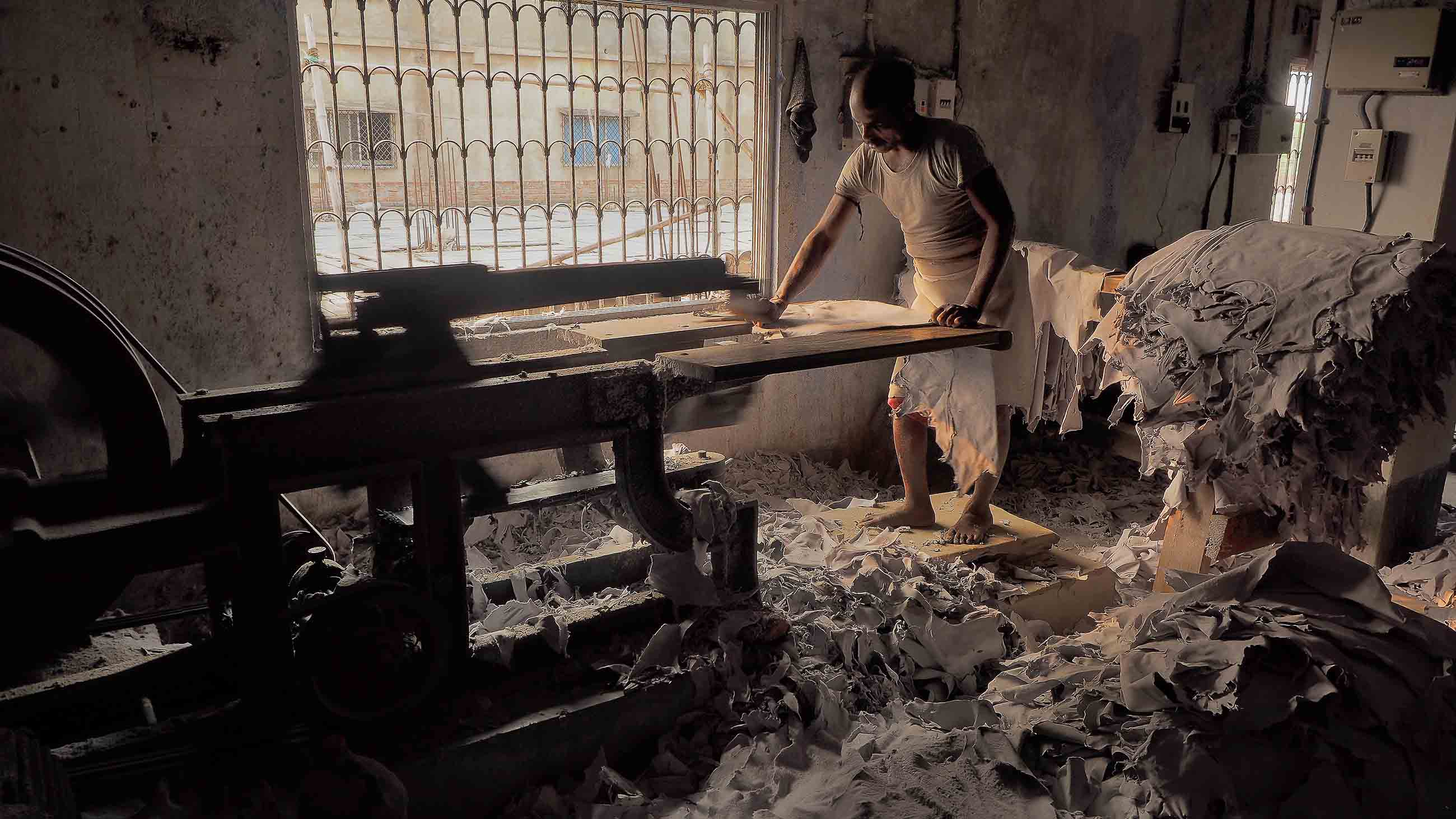
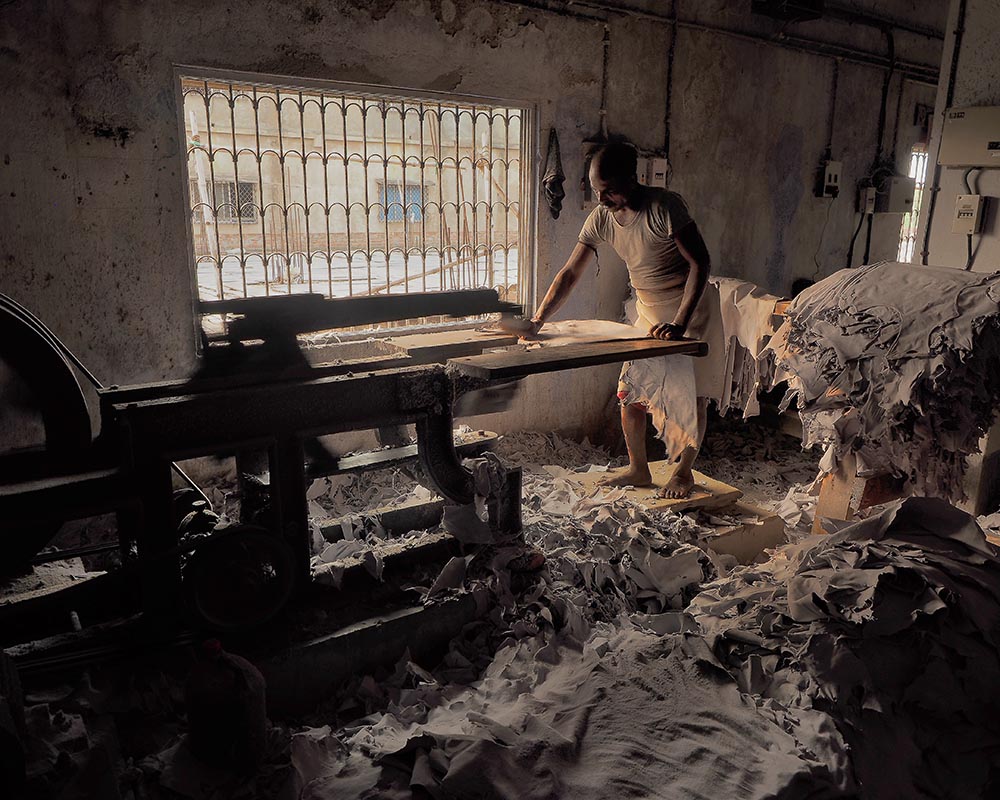
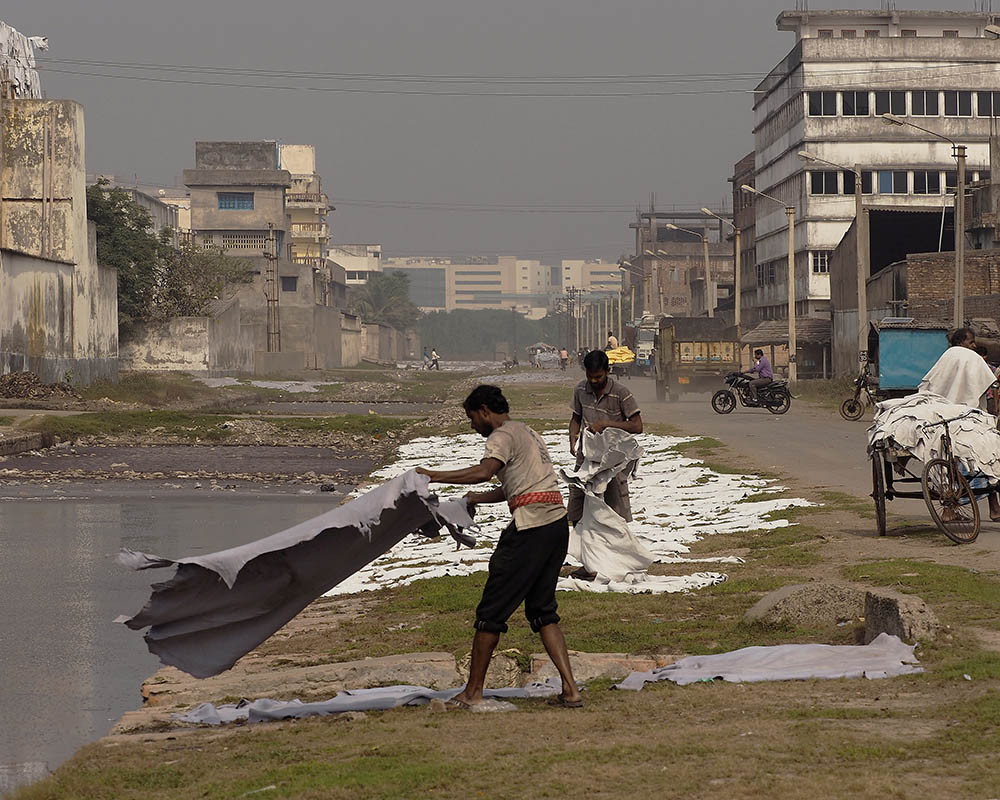
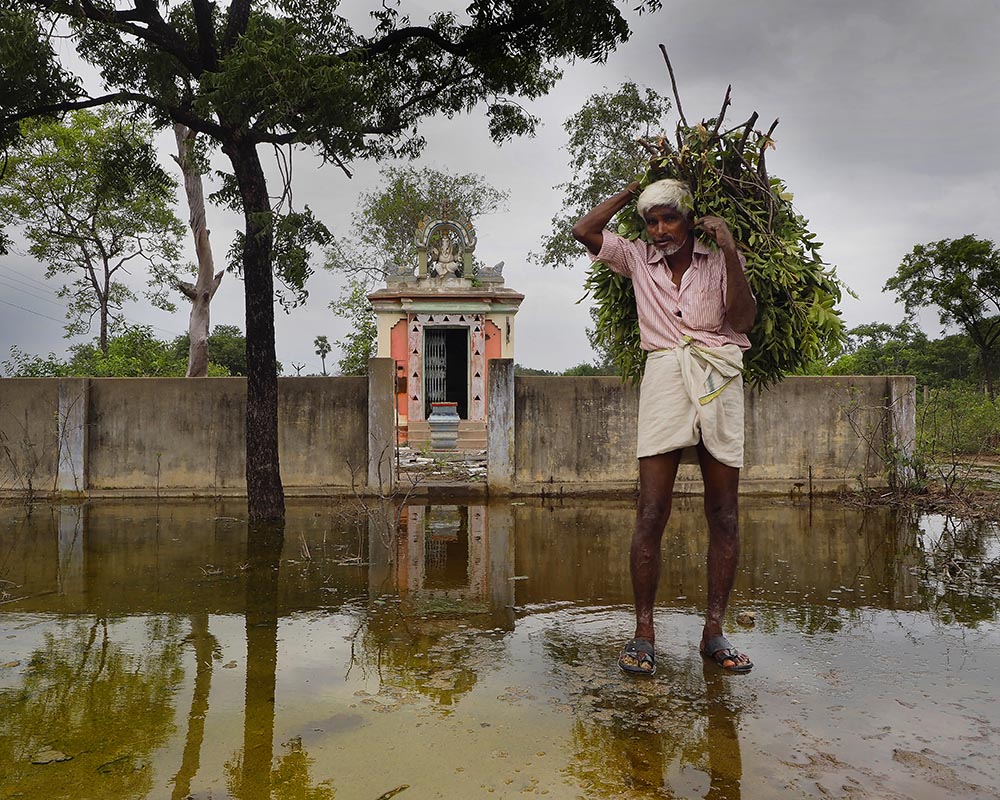
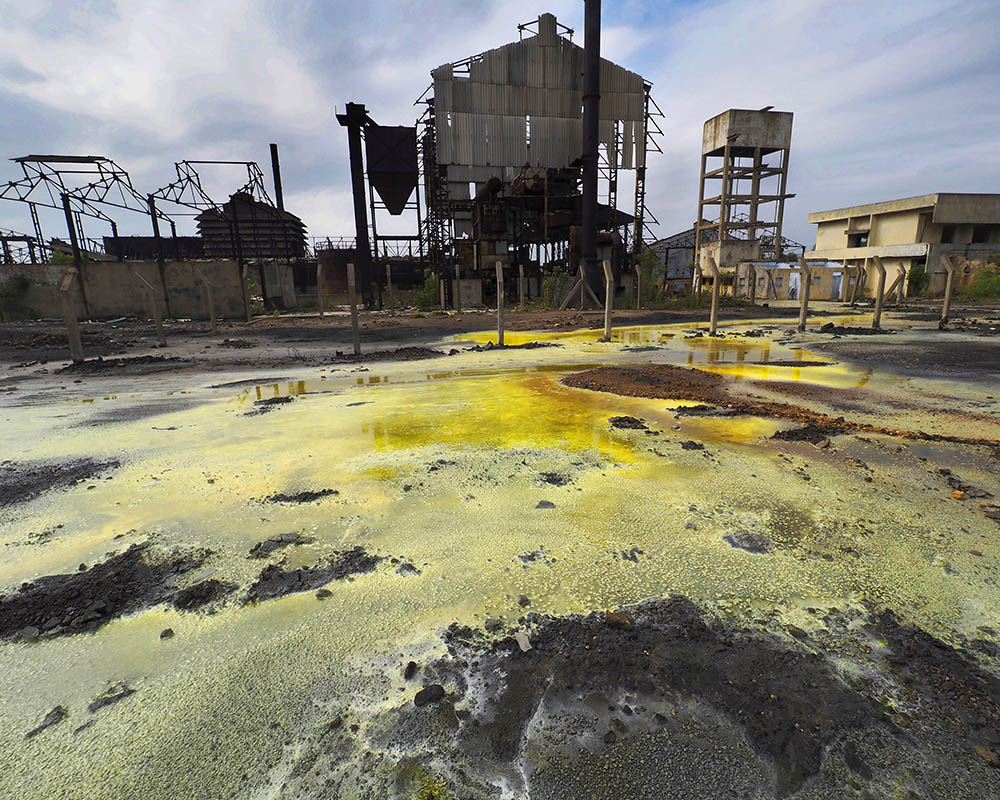
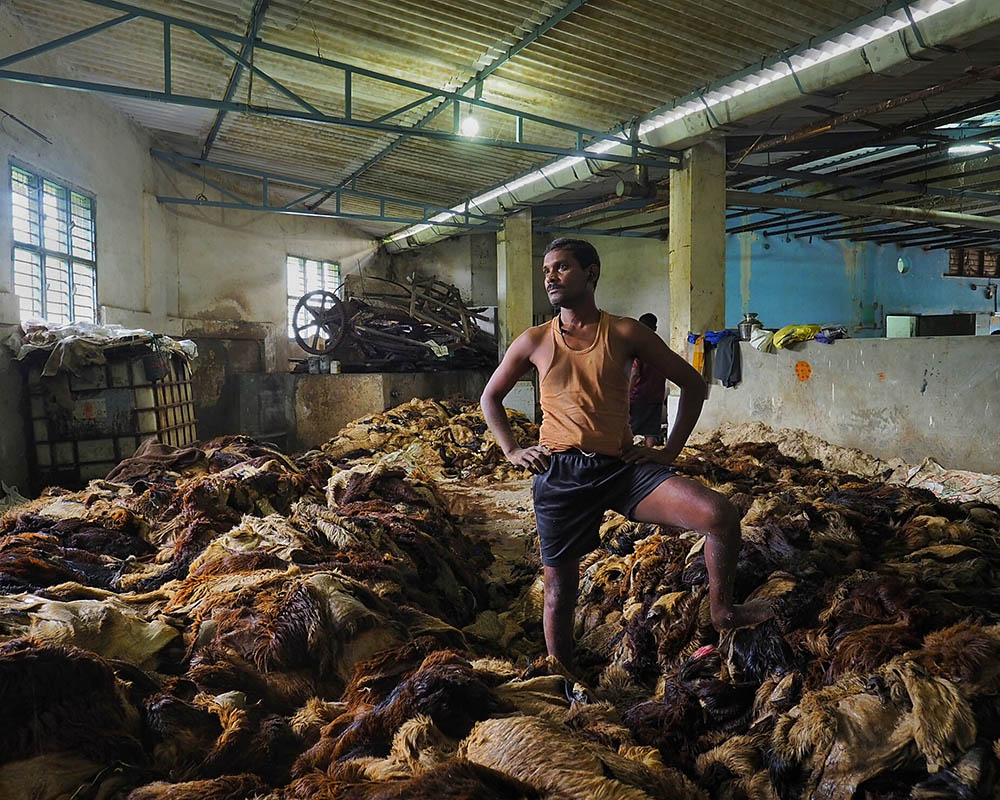
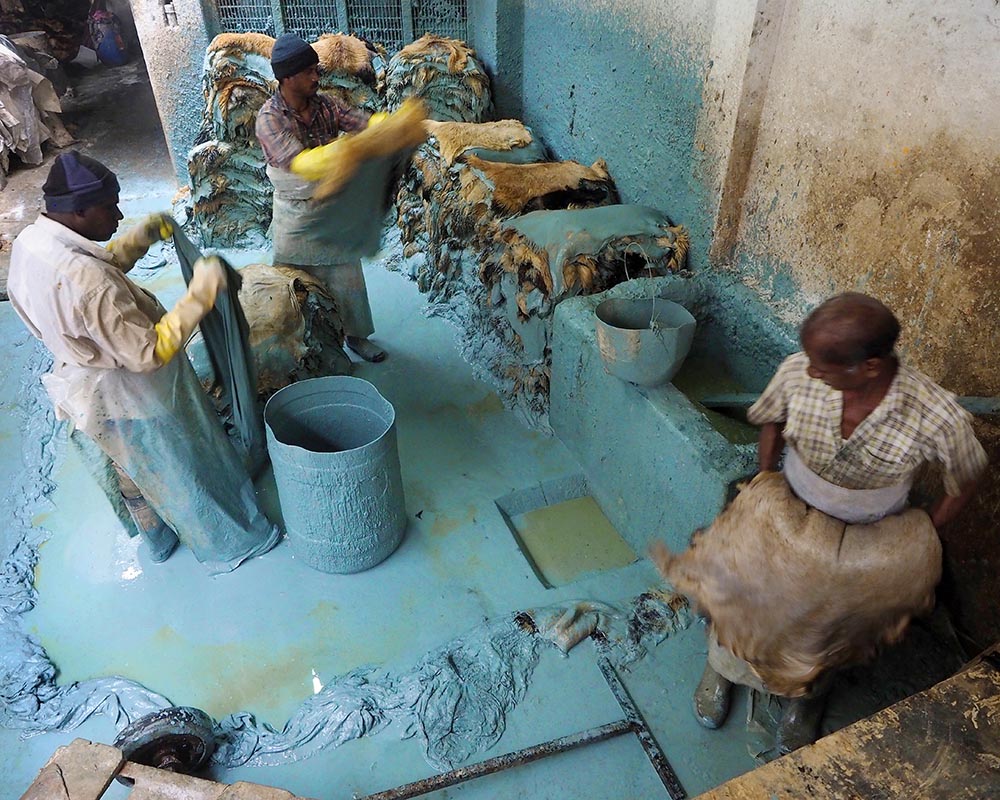
Comments are automatically closed one year after article publication. Archived comments are below.
amazing article im going to use it in my school paper!